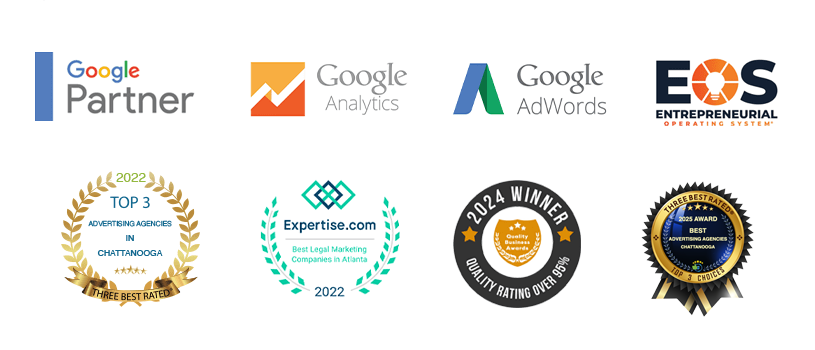Artificial Intelligence
Artificial Intelligence is any technology that seeks to mimic human intelligence, which covers a huge range of capabilities such as voice and image recognition, machine learning techniques and semantic search. It’s one of the biggest and most important trends in digital marketing today. AI can analyze consumer behavior and search patterns, utilizing data from social media platforms and blog posts to help businesses understand how users and customers find their products and services. Businesses adopting AI in 2019 will be able to save costs and accelerate growth, cutting an edge over their competitors.
According to Gartner, 30% of companies worldwide will be using AI in at least one of their sales processes by 2020.
How it will change marketing:
1. A more educated marketing process
The growth of AI in the marketing world will allow for more truly data-driven campaigns, where AI will allow data to be more properly used and integrated into each ad campaign.
2. A more personalized marketing process
More than ever before, AI will allow marketers to reach consumers at every stage of the process based on their interests and demographics. One example of this is by making it easier to put customers into distinct groups that will allow for added segmentation to highly targeted niches.
For a content standpoint, AI will be better to track what type of content consumers are most interested in, allowing a website to be “curated” for each individual user.
3. A broader focus
Rather than spending a significant amount of time sifting through data to come up with a strategy, marketers will spend more time applying what has been learned from the data, allowing the most creative marketers to get ahead rather than simply those who are best at crunching data.
Voice Search
“Hey, Siri, where is the closest CVS?”
Almost one-third of the 3.5 billion searches performed on Google every day are voice searches, with personal assistant devices leading the way (TheeDesign, 2017). More and more people use Amazon’s Alexa, Apple’s Siri and Google Assistant every day. As their capacity for recognizing human speech has improved significantly, they can be incredibly helpful in both searchings for information on the Web and doing things around the house.
50% of all searches will be voice searches by the year 2020
20% of mobile queries on Google are voice searches
25% of all Bing searches are voice searches
Tip: Remember to write in a conversational tone and think about keywords that people will speak rather than type. Optimize this content into your website by incorporating questions and phrases into your blog posts or social media posts. The best way to start building this natural language is by writing an FAQ section and answer all of those questions. Think of all the questions your customers ask on the phone or email and note the phrases you hear over and over again.
There is More Than One Reality- AR & VR
Today’s user wants basically two things: to be engaged and to be an active participant in the brand’s messaging. Augmented and Virtual Realities (AR and VR) can fulfill both of these needs, offering brands tremendous opportunities in the field of customer experience.
Businesses are already embracing the power of this new technology in creating brand awareness, as well as in selling individual products. IKEA, for example, has been using VR gaming technology since 2016. With its shopping app, IKEA VR Experience, its customers’ can try out different IKEA solutions before buying them. Other big players that have experimented with AR include Nivea, Starbucks, and Volkswagen.
Virtual and Augmented Realities are becoming increasingly commonplace as a marketing tool for brands. The VR and AR market is supposed to be worth 27 billion dollars. It is expected that in only four years, it will reach the size of 209.2billion dollars (Statista).
Tip: VR and AR marketing are still emerging, so it’s a great time to explore your options and get ahead of the curve. It will assist many verticals in displaying what the client can expect from granite countertops to plastic surgery. An example would be VR and AR could allow consumers to get a 360-degree view of a product before actually purchasing it.
Social Media
There are 3.196 billion global social media users, which equates to 42% market penetration (We are Social). With numbers like that, its significance to the society cannot be ignored — especially in the marketing world.
Influencer marketing
In today’s world, where social media is ubiquitous, people tend to gravitate toward experiences that are authentic and real. And potential customers are more likely to believe a real person over an advertisement about how good a certain product or brand is. This is where influencers come in.
When planning campaigns, consider hiring a micro-influencer to improve the quality of your outreach with more niche audiences. Unlike well-known or celebrity influencers, micro-influencers have smaller, highly engaged social media audiences. They are more affordable for brands, are viewed as more trustworthy by consumers, and often drive better results.
Tip: One of the easiest ways to find micro-influencers is through a hashtag search on Twitter or Instagram.
Social media stories
According to consulting firm Block Party, Stories—the vertical, disappearing videos invented by Snapchat—are now growing 15 times faster than feed-based sharing. An estimated four out of five major brands are already on Stories. If you aren’t creating Stories, it’s time to start. Stories can be as easy to create as you choose, so there’s a low barrier to entry for any team’s skill set. Share content weekly (and at different times of day) to see what works best with your audiences.
Facebook’s own chief product officer Chris Cox shared a chart showing that Stories are set to surpass feeds as the primary way people share things with their friends within the next year. And nearly a billion users across WhatsApp, Instagram, Facebook, and Snapchat already turn to Stories to share.
Tip: Shoot your videos vertically. That’s how people watch them.
Tap your team’s full creative resources
Stories work best when they integrate video, storytelling, text, images, and more. Expecting a single social media specialist to integrate all these skills is a tall order. Instead, find ways for your video, photography, and graphic design teams to join forces to create something memorable.
Get creative with your Story structures
Stories are easy to create and allow you to produce content quickly, so you should experiment with different structures to find what works best for your brand. For example, you can create tutorials showing people how to use your product, give a behind-the-scenes look at your company culture, host a takeover, or run a Q&A on topics that interest your customers.
Add UTMs to your links to track success
Business accounts with over 10,000 followers (or verified accounts) can add a “swipe up” feature to their Stories. This lets viewers follow a link to another website or landing page.
By adding UTMs to your Story URLs, you can track where users are going and get a better understanding of what content they like. If you don’t have access to the “swipe up” feature, add a link with a UTM code to your bio.
Get in early with Facebook Stories
So far, Facebook Stories (which appear on the network’s flagship platform) haven’t really caught on. But CEO Mark Zuckerberg wants to get Stories right on Facebook and is investing a lot in the format.
Currently, only around nine percent of major brands post to Facebook Stories, but companies that get in early may enjoy an early adopter advantage. Plus, it’s easy—the tap of a button lets you syndicate Stories straight from Instagram to Facebook.
Experiment with AR and custom GIFs in your Stories
Consider adding augmented reality features and GIFs to your storytelling. AR experiences and GIF stickers are now widely available as features of the Stories cameras on Facebook, Instagram, and Snapchat. Use GIFs to enhance your images, grab attention, and direct viewers’ attention to something like a call-to-action or “swipe-up.”
Visual Search
While many have been focused on the marketing potential of capturing conversational queries thrown at personal assistants, big brands such as Google, Pinterest and Microsoft have been focused on developing a stronger competitor in interactive SEO: visual search.
Visual search can take the user experience to a totally new level. With visual search, users can upload an image to conduct a search and get more specific results
As 93% of consumers consider visuals to be the key deciding factor in a purchasing decision (Kissmetrics), visual search engines are bound to revolutionize the retail industry.
Marketers can get the edge on competitors by jumping on the visual search trend in 2019 to draw customers and serve them the perfect product.











